Based on the working principle of thyristor firing angle control, AC power can be controlled. The system uses a display unit to show the full power, and then the user can input the desired percentage to reduce the power to the load. To maintain the load power, the firing angle will be automatically adjusted. The project uses a lamp to make the input power equal to the required power. This process is achieved by connecting a TRIAC in series with the AC load. The system uses the 8051 microcontroller family. A keypad is used to input information to the microcontroller, with ZVS as a reference. An LCD display is used to display information.
AC Power Controller with Programmable Interference
The block diagram of AC power controller with programmable interference can be built with Microcontroller (AT89S52/AT89C51), Power Supply Block, Keypad, LM358 (Comparator), LCD Display, MOC3021, 1N4007, BC547, LED, Resistors, Capacitors, SCR. Keil µVision IDE and MC Programming Language: Embedded C
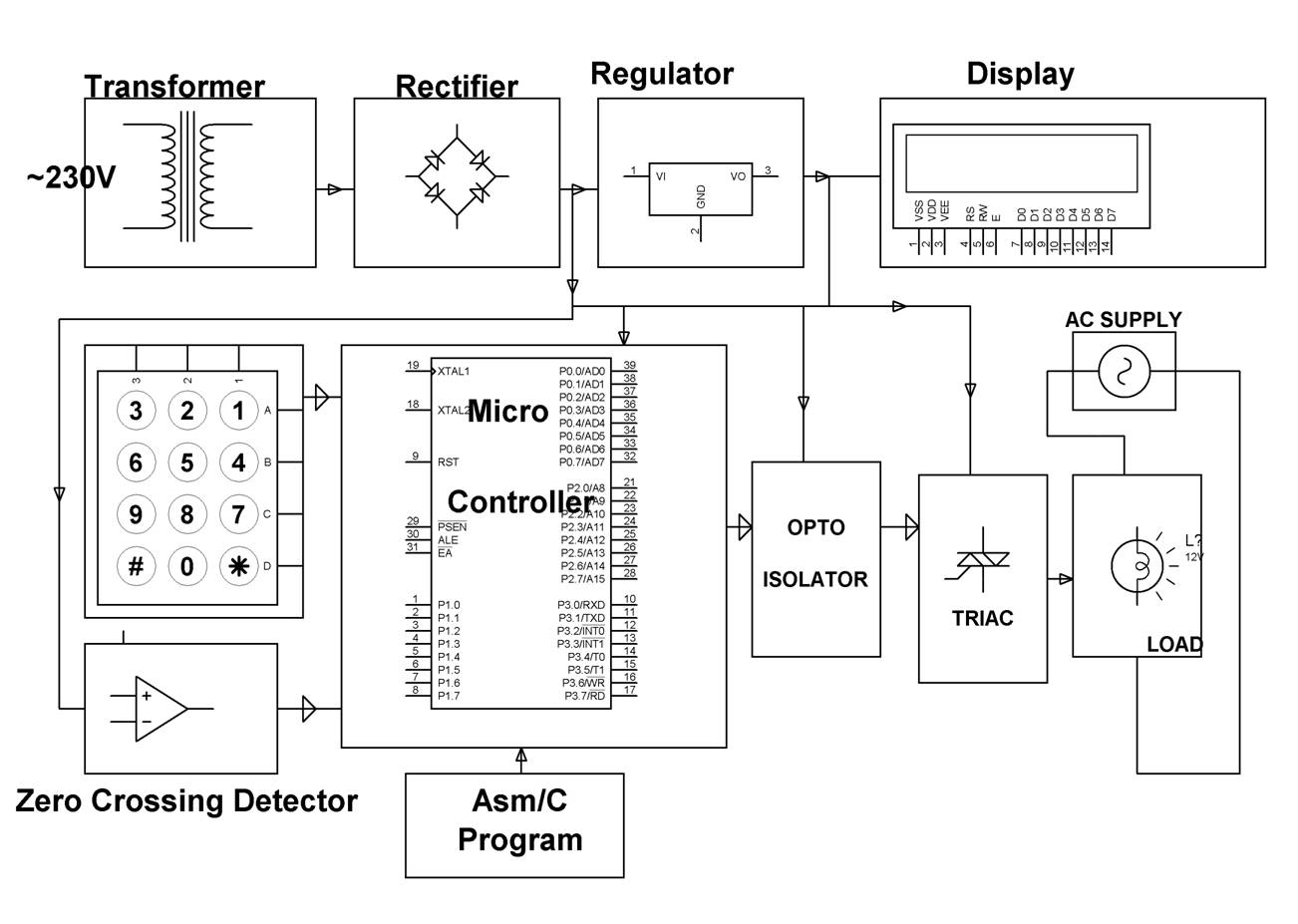
Power Supply
The power supply circuit can be built with a step-down transformer, which steps down the voltage from 230V to 12V AC. This AC voltage can be converted to DC using a Bridge Rectifier. The role of the capacitive filter is to remove the ripples and it is then regulated to +5V using a voltage regulator 7805 which is necessary for the process of the microcontroller and other components.

Embedded Systems
An Embedded system can be defined as a blend of hardware and software which jointly form a component of a larger machine. The best example of an embedded system is a microprocessor. An embedded system is intended to run on its own without human interference and may be necessary to react to actions in real time.
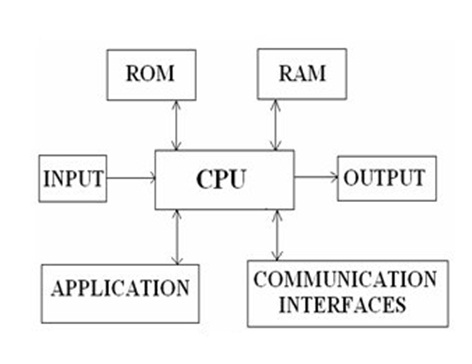
AT89S52 Microcontroller
- Watchdog Timer AT89S52
- Full Duplex UART Serial Channel
- Eight Interrupt Sources
- Three 16-bit Timer/Counters
- 32 Programmable I/O Lines
- 256 x 8-bit Internal RAM
- Three-level Program Memory Lock
- Crystal Frequency 11.0592MHZ
- 4.0V to 5.5V Operating Range
- 8K Bytes of In-System Programmable (ISP)
- Flash Memory
- Compatible with MCS®-51 Products
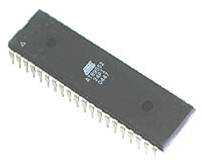
LED
LEDs are semiconductor devices are made out of silicon When current passes through the LED, it emits photons as a byproduct. Normal light bulbs produce light by heating a metal filament until its white-hot LEDs present many advantages over traditional light sources including lower energy consumption, longer lifetime, improved robustness, smaller size and faster switching.

SCR
An SCR (silicon-controlled rectifier) is a 4-layer solid state device that controls current An SCR comprises of four layers of alternating P-type and N-type semiconductor materials. Si is used as the essential semiconductor, to which the proper dopants are added. The doping of PNPN will depend on the SCR application since its characteristics are related to those of the thyratron.

MOC3021 (Opto Coupler)
Opto-couplers are made up of a light emitting diode, and a light responsive device, all covered up in one package. There is no electrical connection between the two devices. Here, the light responsive device may be a phototransistor, photodiode, or esoteric devices like thyristors, triacs etc
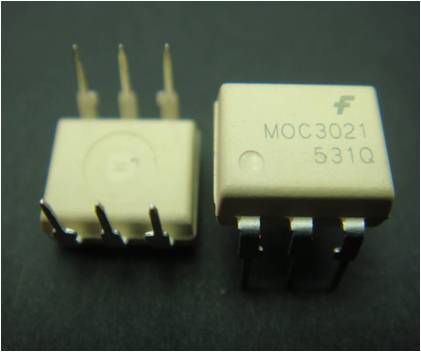
LM 358 (Comparator)
- Inside frequency compensated for unity gain.
- Large DC voltage gain-100 Db.
- Wide bandwidth (unity gain): 1 MHz (temperature compensated)
- Wide power supply range
- Single supply: 3V to 32V
- Very low supply current drain (500 µA)
- Low input offset voltage: 2 mV
- Input common-mode voltage range includes ground.
- Differential input voltage range equal to the power supply voltage.

Keypad
- A keypad is a set of keys placed in a block which frequently bear symbols, digits, and a complete set of alphabetical letters.
If it frequently includes numbers then it can also be named a numeric keypad. - In order to notice which key is pushed from the matrix, the row lines are to be finished low one by one and read the columns.
- Assume that if Row1 is made low, then read the columns
- If any of the keys in row1 is pushed then equally the column 1will give low that is if next key is pressed in Row1, then column2 will give low.
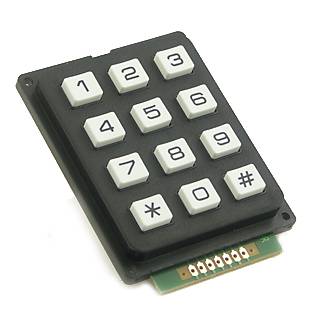
Project Working
The AC power controller with programmable interference method is used to control the lamp intensity by controlling the AC power to the lamp. This is done by delaying the application of triggering pulses to the TRIAC or using the method of firing angle delay. The zero crossing detector supplies pulses at each zero crossing of the AC waveform which is applied to the Microcontroller.
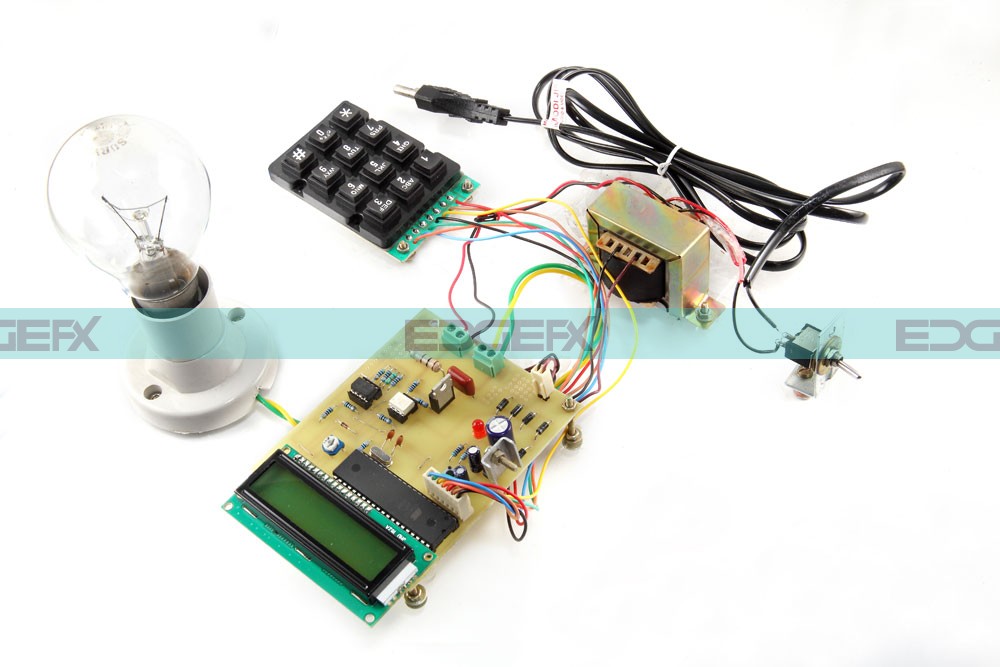
At first, the Microcontroller gives these pulses to the optoisolator which consequently activates the thyristor without any wait and thus the lamp glows with full intensity. Now employing the keypad interfaced to the Microcontroller, the necessary strength in percentage is applied to the Microcontroller and it is planned to accordingly delay the use of pulses to the optoisolator. Therefore the activating of the thyristor is delayed and accordingly the lamp intensity is controlled.
